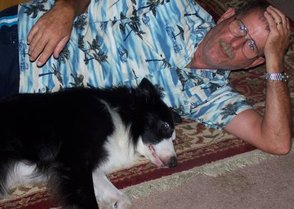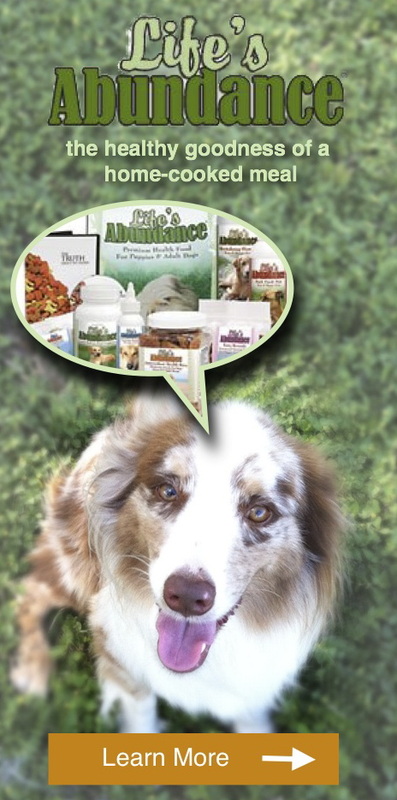The most important times to classically condition your dog are when visitors come to your house, on walks, in dog parks and especially during dog training classes.
From puppyhood onwards, have every visitor to your house offer your dog a few pieces of kibble. Even though your puppy may be Mr. Sociable right now, unless you take this precaution, he will most certainly become more standoffish, asocial, and maybe antisocial as he grows older. Please do not take your puppies golden demeanor for granted. Have every household visitor offer a food treat to your puppy/dog and then your dog will look forward to visitors. Additionally, teach each visitor how to use the treat to teach your dog to come, sit and stay.
Most people walk their dogs too quickly through the environment. There is simply too much for the dog to take in — people, other dogs, other animals, noises and smells — “Oh there’s a squirrel. I smell Trixie. Hmm! I just love the smell of her urine. Trixie! Trixie! Trixie! Son of a female dog! That motorcycle was soooooo loud! Oh, oh, oh! Cat poo! Woo hoo! Yes!!! And another squirrel. Two squirrels Oh what’s my owner saying now? Oh, S.O.A.F.D! There’s Bruno. OH he’s HUGE! And his owner looks nervous. Why’s my owner jerking my leash? Is that a discarded hamburger wrapping. There’s a cat. I know there’s a cat. Can’t see it. Can’t hear it. Can’t smell it, but I know it’s there somewhere. I can feel it. She’s looking at me. Where is she? Oh NO! Children! I hope they don’t come this way. Another squirrel. Is that the mail truck three blocks away? I hope I get back home before he come.” And so it goes on. The dog’s brain goes into sensory overload. The dog is over-stimulated and instead of paying attention to his owner he becomes hyperactive or reactive.
When walking a dog, on-leash or off-leash, stop every 25 yards, let the dog take his time to look, listen and sniff and wait until he establishes eye contact (acknowledges your presence) and accepts a couple of pieces of kibble before saying “Let’s go” and continuing the walk for another 25 yards. Every couple of hundred yards, find a comfortable place to sit and wait for your dog to settle down and get used to the new environment. Offer your dog a piece of kibble every time the environment changes, for example, each time a person passes by, and maybe two pieces of kibble for a man, a piece of freeze-dried liver for a boy, and three pieces of liver for a boy on a skateboard.
When dogs visit unfamiliar environments, offering then kibble is a great temperament test for trainers, veterinarians and owners to check that the dog is at ease. If the dog refuses kibble from the owner, he is probably anxious about the environment — so give him time to adapt. However, if the dog accepts kibble from his owner but not from his veterinarian or trainer, then the dog most probably feels ill at ease with the veterinarian or trainer and so, proceed slowly — verrrry slowly.
Some people are afraid that offering kibble during classical conditioning might unintentionally reinforce bad behaviors. Certainly, when training, we are always classically conditioning and operantly conditioning at the same time. If you use your voice when classically conditioning, “There’s a good boy, it’s OK,” you might unintentionally reinforce all sorts of unwanted behavior. The classical conditioning still works for us but the operant conditioning works against us and makes the problem worse. In time, the dog will begin to feel OK about the situation but will continue barking and growling, or hiding and shaking, because that’s what he’s been unintentionally trained to do. However, by using food when classically conditioning, you can only reinforce good behavior because a dog cannot bark and lunge or eyeball another dog at the same time as turning to face you to take food.
For example, let’s say we are trying to classically condition a dog that is barking and lunging at another dog. We offer food, but the dog ignores our offerings and continues barking and lunging. Eventually though, the dog barks himself out and sniffs the food, whereupon he turns away from the other dog to take the food. Taking the food does not reinforce the dog’s barking and lunging. On the contrary, the food reinforces the dog for stopping barking and lunging, for turning away from the other dog and for turning towards his owner. After a couple of dozen repetitions, the dog will begin to form positive associations with the sight of other dogs. “I love it when other dogs approach because then my owner feeds me dinner.” And as a bonus, the dog’s trained response to seeing another dog is to turn away from the dog and to sit quietly and expectantly facing his owner.
As classical conditioning proceeds, the dog is less and less inclined to react in a negative manner towards the scary stimulus. Once a dog forms positive associations with stimuli, such as a vacuum cleaner, other dogs, or people, he doesn’t want to growl or snap and lunge at them.
You simply cannot do too much classical conditioning. Use patience and persistence; it ALWAYS pays off.
| Scott Cook Professional K-9 Trainer of 45+ years, has been an avid Canine Enthusiast since childhood and it is worth mentioning that he successfully trained his first dog (a rescue dog with behavioral aggression issues) at the age of 11! |
He is a current Professional Member of the International Association of Canine Professionals and owns and operates his own dog training business with 45+ years of professional Canine Training experience in his kitty! You are in good hands with Scott!









 RSS Feed
RSS Feed




